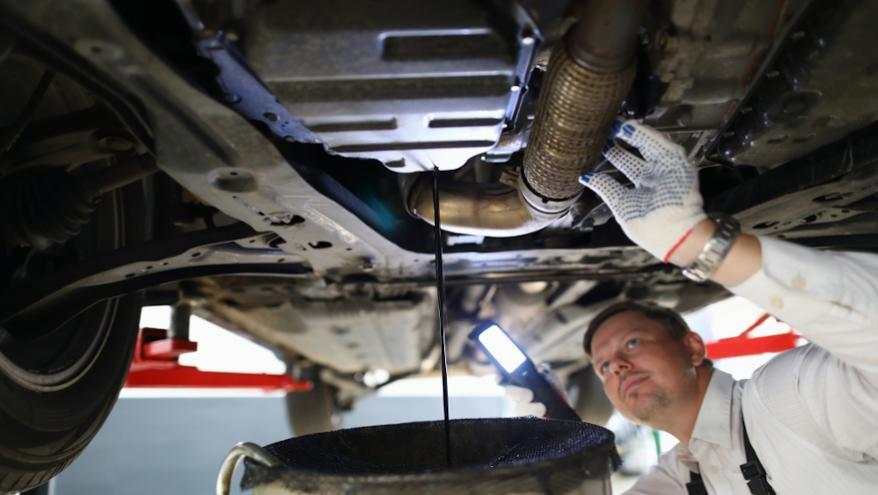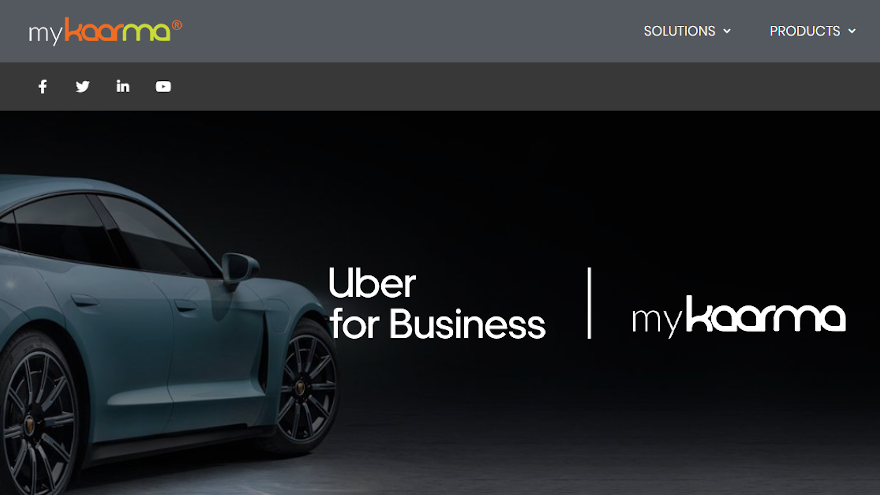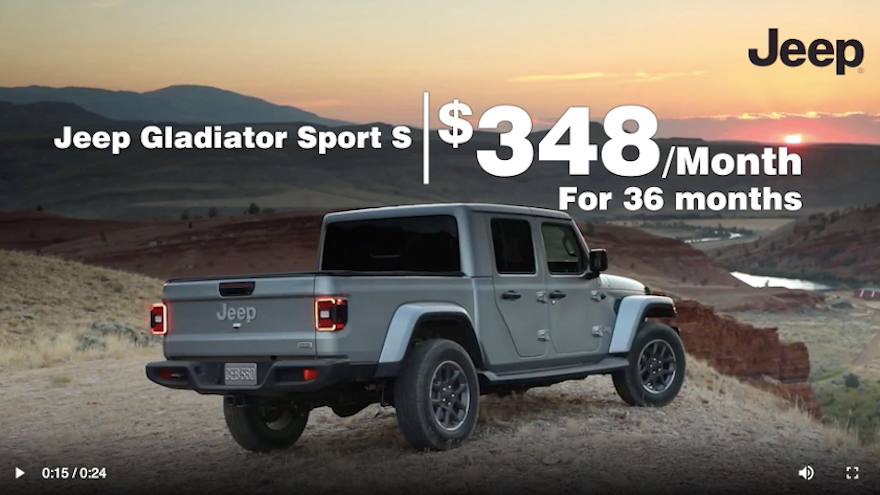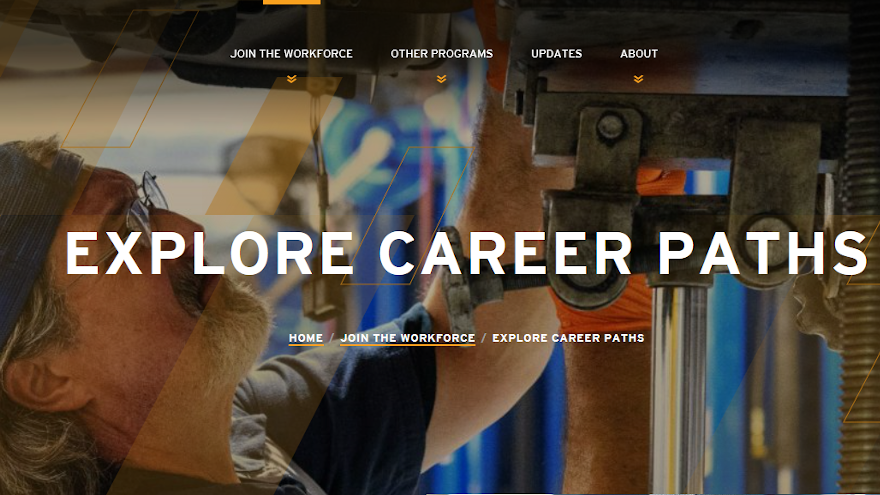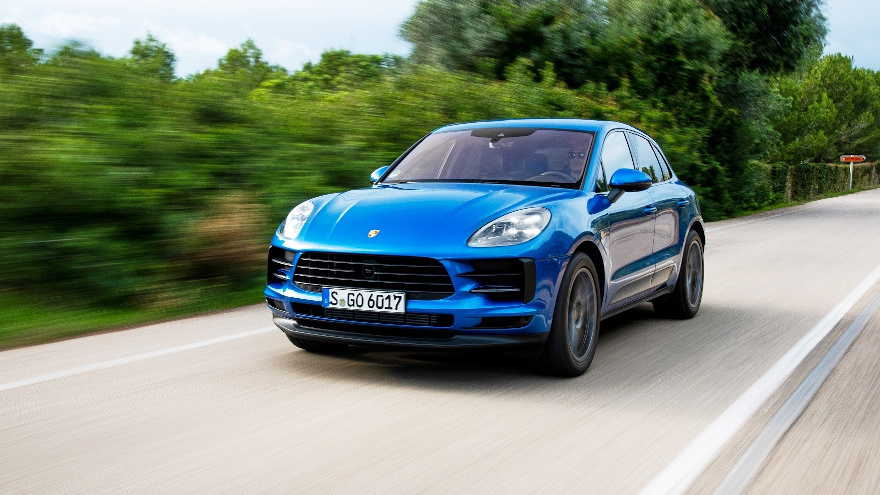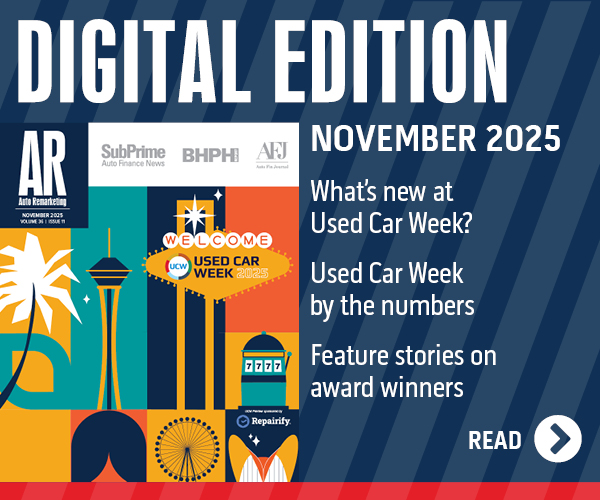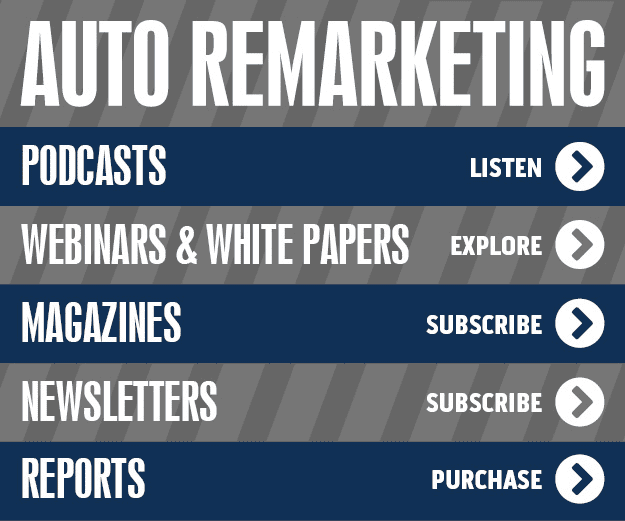When dealers do not refer used off-make buyers to sister stores within their auto group for service, the group loses up to $230,000 annually in potential customer pay revenue, or CP$, per store.
That is one of the findings of Affinitiv’s Automotive Customer Loyalty study.
The study notes that auto groups continue to boost used-car sales in response to consumer demand and lower new-vehicle margins. But they are overlooking opportunities to service a high number of their used-car buyers, according to Affinitiv.
“If I buy a used Honda at a Toyota dealership, I might take it back to that dealership for an oil change, but it’s unlikely I’ll take it back for a brake job or transmission service,” Affinitiv chief executive officer Scot Eisenfelder said in a news release.
He continued, “Lost opportunities occur when the Toyota salesperson fails to transfer that customer’s information over to the Honda store within their group, so the Honda store can market to and win that buyer’s service business.”
Affinitiv’s vice president, strategy and analytics Doug Van Sach said, “In auto groups there needs to be a paradigm shift from individual stores holding onto a perception that they own all the customers in their database, to treating the group’s entire customer database as an asset that can be shared among all dealers.”
Van Sach added, “I realize on the new-car side this is a bit tricky, but on the used-car side everyone’s a winner. A store may give away some used off-make customers, but in return they will gain used same-make customers, which are worth significantly more.”
According to Affinitiv’s data analysis, in every dealership regardless of brand, the average repair order, or RO, amount is 68% higher for a used same-make vehicle than the average RO amount for a used off-make vehicle.
Analyzing data from deals at more than 1,000 auto dealerships, Affinitiv found that among all dealerships, used-vehicle sales from the first six months of 2017 to the first six months of 2018 are growing at a faster rate than new-vehicle sales. That results in a greater mix of used customers in a dealer’s database.
Domestic: Used vehicles as a percentage of total sales increased year over year from 43.6% to 44.4%.
Import: Used vehicles as a percentage of total sales increased year over year from 42.5% to 44%
Luxury: Used vehicles as a percentage of total sales increased year over year from 38.9% to 42.3%
That trend represents a threat to dealers’ current service business as the number of warranty customers decreases, Eisenfelder said.
“To attract more used customers and achieve greater service potential, auto groups would do well to organize themselves around their customers, instead of organizing around the individual stores,” Eisenfelder said.
The purchase to service, or P2S rate for dealerships represents the percentage of car buyers that return to the dealership of purchase for service. For its study, Affinitiv calculated P2S rates by taking all vehicle sales in the first six months of 2018, then looking out 12 months from the deal date to see if those VINs had an RO. Average P2S rates are as follows:
Domestic dealership P2S rate:
— Used same make: 48.4%
— Used off make: 26.1%
— Opportunity gap for auto groups: 22.3%
Import dealership P2S rate:
— Used same-make: 54.6%
— Used off-make: 28.5%
— Opportunity gap for auto groups: 26.1%
Luxury dealership P2S rate:
— Used same-make: 51.5%
— Used off-make: 19.8%
— Opportunity gap for auto groups: 31.7%
Affinitiv calculated the potential increase in CP$ that an auto group could make per store if it closed the opportunity gaps between used same-make and used off-make customers.
The company calculated the potential revenue increase by comparing the five-year lifetime value, or LTV, of used off-make vs. used same-make customers. LTV calculations factored in the average CP$ per RO, purchase to service rates, service retention rates and the average number of ROs per year, per VIN over a five-year period.
According to calculations, auto groups could increase their annual CP$ by $230,000 per store just by closing the service opportunity gap between used off-make and used same-make buyers.
“This figure doesn’t take into account that if you convert a used off-make buyer into a loyal service customer at another store, that customer is more likely to remain loyal to your auto group brand on the next purchase,” Van Sach said.
Affinitiv recommended some best practices to retain used off-make customers within an auto group. Those include:
— When a salesperson sells a used off-make vehicle to a customer, that provides an opportunity to make the customer aware of the appropriate brand store within the same group. The salesperson could offer an incentive for a first visit, such as a complimentary new owner orientation session or a service coupon.
— Ensure that used off-make buyers’ customer data is transferred to the appropriate store’s marketing database. Send out a, “Welcome to our family,” message that shows clear reasons to choose the dealer for service.
— Mine current databases for used off-make vehicle buyers in the last two years, and implement a targeted marketing strategy to recover lost revenue.
— Foster loyalty to the dealer group brand by recognizing and rewarding customers for their cumulative purchase and service activity across the dealer group.
A new integration between Uber for Business and dealer service department communications and payments software provider myKaarma could help dealerships reduce shuttle costs and guest wait times, decrease the number of days needed for loaner cars and simplify travel management, according to the companies.
The companies say the integration can provide dealer service departments with an efficient transportation method that can help increase customer satisfaction and reduce costs.
With myKaarma’s integration with the Uber Central API, dealerships can book Uber rides directly through the myKaarma application with a fully integrated lookup and specify pick up and drop off locations on behalf of customers.
Then, based on their pickup and drop off location, the customer receives a text message with a secure link for a ride.
Dealerships can use this integration, which enables communication between the transportation manager, the driver and the customer, alongside myKaarma’s pickup and delivery module or as a standalone module.
Real-time ETAs also keep dealerships connected with their customers every step of the way, according to the companies.
All rides, along with any relevant details, are tracked within the application.
Running on mobile phones, desktop and tablet computers, myKaarma’s software offers two main features: end-to-end customer communication and payments.
myKaarma designed the communications tools to blend into a service adviser’s daily workflow. Users can use the tools through mediums of communication such as voice, text, and email.
The full platform, service@home, includes pickup and delivery. It also features video walkarounds and driver tracking, along with the communications and payment features.
myKaarma said those features are integrated and synced with the DMS.
With the software, service advisers can send photos and videos to customers. Those photos and videos more clearly explain their repair recommendations, myKaarma said.
Then, the service advisers can receive real-time authorization for additional work.
After completion of the service process, customers can pay their bills online or through other options, which myKaarma says eliminates any wait at the dealership when they pick up their vehicle.
myKaarma said service departments implementing its cloud-based software tools see an average increase in dollars per repair order of 37%, a 50% reduction in voicemails left with advisers, a near 100% reduction in authorization disputes, a 33% decrease in loaner car days and an increase in CSI scores.
Service departments gain access to a real-time record of communication with their customers and “a bird’s eye view of the service department that allows them to manage their operations more efficiently,” according to myKaarma.
“At myKaarma, it is our mission to optimize as much of the dealer's process as possible and give back time to service managers, service advisors, and other dealer personnel,” myKaarma chief executive officer Ujj Nath said in a news release.
Nath added, “Our integration with Uber for Business provides dealers with one place to book and track Uber trips for their guests without having to retype their pickup or drop off address. This will have an immediate impact on reducing loaner car days and delayed wait times for transportation and increasing long term customer loyalty."
Uber for Business global head of guest products Neal Watterson said coordination of shuttles and loaners for customers can be inefficient, time-consuming, and costly for auto dealers.
“The ability to make the entire process seamless is an important step forward for the industry at large — and can make a big difference in increasing customer satisfaction, Watterson said.
Watterson added, “We’re excited to partner with companies like myKaarma to make access to customer transportation simple and efficient for the automotive sector.”
Tim James says videos that promote manufacturers’ monthly incentives are “one of the most-used and desired types of marketing content.”
James is chief operating officer for Flick Fusion, which offers a video hosting, marketing and distribution platform to automotive and other inventory-based industries.
The company on Monday introduced Dynamic Marketing Videos, or DMVs, for auto dealerships, which it says can reduce the time and expense involved with the creation of marketing videos that promote manufacturers’ incentives.
Flick Fusion said that with the DMV platform, auto dealerships’ ad agencies and video marketing resellers can quickly create scalable, customized video content for all of their dealership clients.
And they can do that at a very low cost, Flick Fusion said.
“These videos create a sense of urgency for car shoppers and can be used in Facebook campaigns, email campaigns, YouTube pre-rolls ads, regular Google ads, remarketing, retargeting, websites, you name it,” James said in a news release.
Flick Fusion notes that manufacturers often announce new incentives such as 0% interest, cash back or lease specials.
The company adds that with traditional methods of video production, creating a video that promotes the OEM special can take up to a week. Video production costs range from $500 to $5,000 per video, according to Flick Fusion.
The company said the OEM promotions typically last 30, 60, or 90 days, and that means “dealerships can spend a lot of money for a video they use only for a limited time.”
Flick Fusion says its DMV platform solves the problem. With the platform, ad agencies and video resellers can use their own video content or use Flick Fusion’s existing video content that highlights every make or model.
Flick Fusion says it can also create custom video content upon request.
To do that, the user creates a campaign template one time and then uploads video content to the DMV platform. Then the user enters in the incentive variables and clicks “Save.”
The platform automatically produces a short, dynamic video within five minutes.
If an ad agency has 100 dealership clients, the agency can instantly customize videos with each dealership’s logo and contact information.
With the assumption that the dealerships’ logos are already uploaded into Flick Fusion’s SMARTFLICKS platform, a user can choose an option to create multiple branded videos.
The agency will have 100 videos customized for each dealership brand within five minutes.
Frederiek Toney says Ford Motor Co. is “acutely aware” of the current automotive service technician shortage.
“The NADA Foundation’s Workforce Initiative is just one program Ford is supporting to raise awareness of and access to training and job opportunities in this growing field,” said Toney, who is president, global Ford customer service division.
The NADA Foundation highlighted Ford’s continuing support of the cause with a recent announcement that the automaker contributed $100,000 to the NADA Foundation’s Workforce Initiative. The foundation launched the initiative this year.
Part of the initiative is a new website, nadafoundation.org, which includes what the foundation describes as the first and only interactive U.S. map of training and scholarship opportunities available for aspiring technicians.
The site also features videos highlighting technicians and the challenging nature of their work.
Scott Walker, a service technician at ADESA Auto Auction outside of Washington, D.C., is one of the featured techs.
“Ford joins an esteemed group of car and commercial truck manufacturers that support the NADA Foundation’s efforts to spark an interest in service technician careers,” NADA Foundation chair and 2008 NADA chair Annette Sykora said in a news release.
Sykora added, “Together, we can work together to attract great talent to our dynamic industry.”
Sykora is dealer principal of Smith South Plains Ford Lincoln in Levelland, Texas, and she discussed how her dealership has helped young men and women find fulfilling local auto industry careers over the years.
“Automotive technicians keep our families mobile and company fleets running by providing the necessary maintenance and repairs to our customers’ cars and trucks,” Sykora said.
She continued, “These technicians have life balance and the means to provide financial stability for their families. Seeing them grow in knowledge and skill in a job they enjoy is heartwarming to an employer.”
Additional contributions to the NADA Foundation’s Workforce Initiative to date include:
—$100,000 from Toyota Motor North America
—$50,000 from PACCAR (Kenworth and Peterbilt)
—$50,000 from Hyundai Motor America
—$50,000 from the National Auto Auction Association
—$25,000 from Porsche Cars North America
—$25,000 from Isuzu Commercial Trucks of America
Lithia Motors announced on Monday that it has acquired Williams Automotive Group’s Honda and Toyota stores in the greater Tampa, Fla. market, widening its already large "coast-to-coast network."
Lithia Motors president and chief executive officer Bryan DeBoer said the new partnership increases the company’s national coverage, which he said now reaches nine out of every 10 consumers in the country.
He said the acquisition also furthers the company’s “modernization strategy.” With the acquisition, Lithia said it has expanded its reach from 82% to 92% of the United States.
Wesley Chapel Toyota, Wesley Chapel Honda and Tampa Honda make up the new platform, and Lithia says they are strong performers.
The company expects the stores to generate a combined annual revenue of $325 million.
Lithia said that for the year of 2019, it has purchased stores totaling $800 million in revenue.
“We are excited to expand our presence in Florida and position Lithia for further growth in this key geographic region,” DeBoer said in a news release.
He added, “We’re thrilled to partner with and welcome John Williams and his talented team to the Lithia family. We look forward to our new team continuing their success and assisting us in expanding our network throughout the Southeastern United States.”
With a joint pilot project including 25 participating Porsche dealers, the luxury automaker has launched online car sales in the United States for its stores.
Porsche said the pilot project will feature new and pre-owned in-stock vehicles. The project combines shopping from browsers or mobile devices with completing the paperwork on-screen. That, according to the company, shortens and eases the process from selection to contract.
“Physical and digital retail experiences have to work hand in hand, yet stay typically Porsche,” Detlev von Platen, member of the executive board for sales and marketing at Porsche AG, said in a news release.
von Platen continued, “Offering our customers an enhanced digital option for acquiring a Porsche makes this experience even more accessible and more convenient.”
Once they submit an online order, customers can visit the dealership just once for final signatures.
Then, they can “collect their dream Porsche,” according to the company.
Twenty five of the 191 independently owned and operated U.S. Porsche dealers are participating in the project as it launches. Depending on the pilot results, a wider national rollout is possible, Porsche said.
Featuring new and pre-owned vehicles that are in a participating dealership’s inventory, the service covers all aspects of buying, financing or leasing a selected vehicle, according to the company. That includes payment and trade-in calculators, credit approval, and financing and insurance options through Porsche Financial Services.
All of that, Porsche said, takes place from wherever a customer chooses to shop.
For ID verification, customers can upload photos of their personal documents. For trade-in valuation, they can upload car pictures.
Once the customer completes the information, the dealer can prepare the necessary paperwork, which the customer can sign once he or she arrives.
The new process is integrated into the websites of participating coast-to-coast dealers.
The company also said that as Porsche looks to expand its overall digital business, Porsche in Germany is launching a similar program.
Porsche Cars North America president and chief executive officer Klaus Zellmer said Porsche is always seeking out new methods of meeting customer expectations.
“For our dealerships, who are at the core of our strategic initiatives, we think this blend of digital and physical interaction with customers will only strengthen their business,” Zellmer said.
Technology company Driven Data has launched its next-generation automotive industry marketing platform, stating that it uses “prescriptive marketing” to help dealers “unlock the power of their existing operational data to inform marketing decisions.”
The company says its platform powers advanced features such as its budget optimization engine. The engine optimizes daily spending based on a predictive algorithm, which determines how quickly cars will sell at various budget levels, Driven Data said. That allows dealers to optimize inventory turn at the lowest ad spend, according to the company.
Driven Data founder and chief executive officer Jon Berna mentioned a statistic from the 2019 NADA Midyear Report showing that the automotive industry spends an average of $628 to sell each new car, which he said is an all-time high.
“With costs rising across the board, dealers need a more robust solution to this problem,” Berna said in a news release. “Driven Data was purpose-built to provide just that.”
He continued, “Dealerships generally see that 17% of their sales in a given month come from prior customers. This new capability can grow that number substantially while saving time and money.”
The company said the product automatically connects dealerships’ first-party data from their CRM and DMS into paid search and paid social. That helps dealerships increase loyalty by reaching their prior customers and suppressing recent for new customer acquisition, Driven Data said.
Alex Motevosian of Kirin Automotive said Driven Data’s diagnostic engine helps users see “operational efficiency and inefficiency at the speed of retail,” which he said helps dealers make decisions in real-time, and with fast results in days.
Motevosian also said the platform can automatically generate custom audiences in Facebook and Google Ads based on dealer data. He said the platform’s universal architecture and data standardization methods allow it to drop first-party, custom audiences into Facebook and Ads automatically.
“If you had 200,000 total customers in your CRM and DMS, it would cost around $250,000 to reach each customer once with direct mail,” Berna said, noting that with Driven Data, the cost would be less than $1,750 in modern mediums such as Google Ads and Facebook.
Driven Data said it uses dealership data and implements advanced machine learning to generate custom first-party audiences based on customers predicted to be in the market for a new car, shopping for a used car, or may need service soon.
Driven Data uses a proprietary ad platform and collects a dealership’s data and marketing collateral to allow the dealership to automatically develop and publish specific, customized ads on Facebook, Instagram, Google, and additional future platforms.
Driven Data chief technology officer Ryan Moore said that results in more engaging ads that will reach customers where they already are.
“We integrate with all core dealership systems and leverage these insights directly into the marketing,” Moore said, adding that “has never been done to this extent.”
Moore continued, “This allows for true ad personalization in the customer’s journey to a purchase or service visit.”
“Driven Data allows dealers to take an in-depth dive into their data that their CRM and DMS do not have the ability to provide,” Kenon Johnson of the Stanley Automotive Group, which operates 12 dealerships in Texas and include the brands of Ford, Lincoln, Chevrolet, Buick, GMC, Fiat, Dodge, Chrysler and Jeep..
Johnson continued, “They are knowledgeable and have tapped into data to provide insights that have not been readily available. The team at Driven Data are truly professionals that understand the importance of what dealers need to evaluate all aspects of their business."
The platform’s advanced features include:
— Data and insights for access advanced reporting on important metrics for each department, which the company says results in a “truly connected” strategy.
— Prescriptive social and search marketing to optimize each campaign, which the company says can increase engagement and conversion at every stage by using operational and customer data from your CRM, DMS and inventory.
— Digital asset management to host images and videos and connect them to marketing.
— Universal benchmarks to see how your performance measures up against the best dealerships on each metric.
— Reconditioning information to show internal maintenance items such as tires, brakes, and alignments with their values directly inside ads.
— Maintenance-free landing pages, which the company says provide a strong customer experience with flexible rules for accurate payments and vehicle information.
— Forecasting, which predicts sales six months in the future using variables such as seasonality, weighted trends, and digital behaviors.
— Budget optimization engine to help optimize ad spend based on all dealership data in the system, and the company predicts how long each vehicle will take to sell.
— Diagnostics engine to resolve concerns and get your process back on track through monitoring areas such as web, CRM, inventory, DMS and paid search.
— Incentives and rebates to “leverage” lease and loan payments on every vehicle in ads automatically.
RightSure Insurance introduced RightRater 1.0 three years ago, helping dealerships ensure that car buyers have auto insurance in place before they drive off in their newly purchased vehicles.
On Tuesday, RightSure introduced RightRater 2.0, which it describes as a 90-second auto insurance quoting tool auto dealers can use to provide car buyers with immediate auto insurance options.
The new version is “faster and even more accessible and user-friendly for car buyers,” said RightSure president Jeffery Arnold.
Arnold said that as of this month, RightRater 1.0 has issued 50,000 policies. He described that as “a remarkable achievement for a new technology.”
The company says car buyers often need coverage during evenings and weekends. Those are prime working hours for car dealers, but not for insurance agents, the company said.
With RightRater, according to the company, coverage can be bound anytime, 24 hours a day, seven days per week. Car buyers can purchase auto insurance in minutes. Because of that, car dealers close more deals, RightSure said.
Car buyers can gain access to RightRater.com from their smartphones. Then, they provide their name, contact information and vehicle make/model.
Instantly, RightRater shops coverage from more than 40 carriers and returns the best quotes in 90 seconds or less, according to the company.
With RightRater allowing buyers to sort their quotes by the total cost, monthly payment or down payment, they can quickly identify the best choice by the feature that matters most, RightSure said.
The insured then receives electronic auto insurance ID cards instantly his or her smartphone.
The company says the product offers two additional advantages for dealers: Increased car buyer satisfaction and reduced risk involved with customers driving off with overnight dealer plates.
"This capability is a gamechanger for car dealerships and their customers, offering an easy, pain-free way to instantly insure newly purchased vehicles with quality coverage at competitive rates,” Arnold said.
Auto/Mate says three out of 100 service customers on average will take advantage of a vehicle upgrade opportunity. The company says technology product Servisell helps salespeople initiate conversations with service customers while they are still in-house and to show customers the benefits of upgrading to a new vehicle, such as lower maintenance costs.
On Monday, Auto/Mate said it completed all dealership management system integrations with Servisell. Auto/Mate said sales managers using Auto/Mate’s DMS to monitor recently opened repair orders can view real-time data that Servisell obtains and displays.
That data includes instant Quickscreen credit on the customer and NADA Trade Data on the vehicle.
Auto/Mate describes Servisell as technology product that “helps auto dealers sell more new vehicles and take more trades out of their service drives.”
“Servisell has a unique technology that combs through customer and vehicle data, then presents the information real-time and in a format that sales employees can easily understand and take action upon,” Auto/Mate president and chief executive officer Mike Esposito said in a news release.
Open/Mate is Auto/Mate’s integration program that is based on open standards that the company says helps third-party vendors integrate with the DMS.
Auto/Mate says that its Service Merchandising module offers various tools to help auto dealers increase service volume while tracking and managing all aspects of service operations.
Servisell president Willard Stawski II described a cost-effective process of integrating with Auto/Mate’s Service Merchandising module.
“We appreciate Auto/Mate’s support of open standards integration so that dealers have more vendor choices at affordable prices,” Stawski said.
Carsharing marketplace HyreCar says it is benefitting from the continued growth of rideshare and food/package delivery opportunities.
“By partnering with HyreCar, dealers have a turnkey solution to optimize inventory utilization and participate in the incremental revenue opportunities that on-demand transportation trends offer today,” HyreCar chief executive officer Joe Furnari said in a news release.
Noting that growth in vehicle supply is critical, HyreCar on Monday reported a significant expansion of its available car inventory. The company said it has onboarded two large multi-location dealerships.
Collectively, those dealerships have already added more than 200 cars in the fourth quarter.
HyreCar says its recent expansion to gain platform vehicles from major fleet and dealer partners came through what it described as consistent growth of drivers needing a vehicle for new gig-economy opportunities.
The company expects that it will soon collectively offer more than 1,000 cars on the HyreCar marketplace. That would result in a 50% increase in available cars on HyreCar’s platform.
That number is in addition to 700 new vehicles that the platform added in September. The company said working toward that growth in vehicle supply is important as HyreCar dealers experience utilization rates of 85% and higher. The company said that drives active daily rental days to new highs.
Furnari noted that one of the company’s new dealer partners runs seven locations within HyreCar’s top market in the Southeastern United States. He said the other partner has scalable operations in three different states in a large southern market, which he described as “precisely the type of dealer groups that can best benefit from our platform.”
He added, “Our ability to add this many vehicles in key markets from just two dealership groups validates our scalable marketplace solution and the need for HyreCar’s solution.”
HyreCar chief operating officer Henry Park said dealerships are an ideal partner, possessing brand recognition and proximity to HyreCar drivers at the local level.
“Additionally, HyreCar’s scalable platform enables our partners to enjoy immediate ROI from their standing inventory,” Park said.

